

6 reasons why district-wide tech implementations are the right choice. Technology Planning with SWIMGrid — Beyond Technology Education. We go beyond just computer technology at your school.

We investigate your needs and allocate the resources for teacher training and student learning, and we address classroom curriculum by integrating technology into your teachers’ existing standards-based lessons. We manage the entire effort so everything happens when it should. We can even provide a full or part-time credentialed computer teacher to run the lab and provide valuable expertise for your teaching staff. UW Information Technology.
Moving Forward initiatives for FY 2018 to support the work of the University, organized by UW-IT’s Seven Strategic Goals.
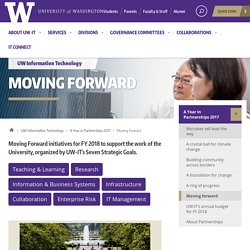
Enable Innovative Teaching & Learning. CTO Mentor Portfolio ~ Michelle Albanese. Program Introduction and Kickoff Instructors: Robin Canale & Nancy Sullivan The Chief Technology Officer (CTO) Mentor Program kickoff and program introduction is geared toward program success.
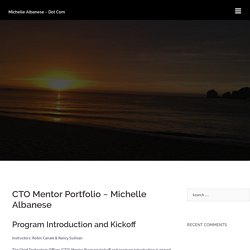
How colleges should rethink their strategic planning processes (essay) IT Strategic Plans: 5 Great Examples from Higher Education and Why You Should Read Them. WIRED 3.01 - Bits and Atoms. The $400 Limit Applies to Atoms Only When returning from abroad, you must complete a customs declaration form.

But have you ever declared the value of the bits you acquired while traveling? Have customs officers inquired whether you have a diskette that is worth hundreds of thousands of dollars? No. To them, the value of any diskette is the same - full or empty - only a few dollars, or the value of the atoms. I recently visited the headquarters of one of the United States's top five integrated-circuit manufacturers. Untitled. What does iKeepSafe's certification mean? – Help Center. iKeepSafe is an independent certification organization that helps companies like Remind demonstrate compliance with federal and state-specific laws around student data privacy.
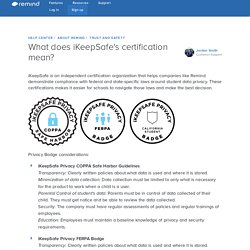
These certifications makes it easier for schools to navigate those laws and make the best decision. Amazon. IT Doesn’t Matter. How to Use The Deming Cycle for Continuous Quality Improvement. How we do HumanOps at Server Density. Academic IT and “The New Leadership Challenge” Michael Kubit has a terrific article in the latest EDUCAUSE Review on The New Leadership Challenge.
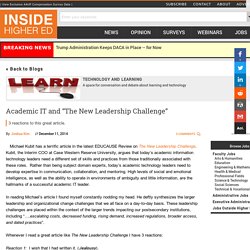
Kubit, the Interim COO at Case Western Reserve University, argues that today’s academic information technology leaders need a different set of skills and practices from those traditionally associated with these roles. Rather than being subject domain experts, today’s academic technology leaders need to develop expertise in communication, collaboration, and mentoring. Post-Implementation Reviews - Project Management from MindTools.com.
© iStockphotohadynyah Take time to reflect on your past to improve for the future.
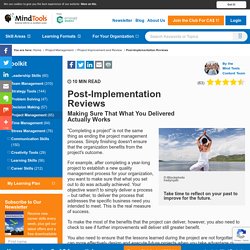
"Completing a project" is not the same thing as ending the project management process. Simply finishing doesn't ensure that the organization benefits from the project's outcome. How can a work breakdown structure help me with requirements? A work breakdown structure is a list of the tasks or deliverables that, taken together, will produce some desired...

By submitting your personal information, you agree that TechTarget and its partners may contact you regarding relevant content, products and special offers. You also agree that your personal information may be transferred and processed in the United States, and that you have read and agree to the Terms of Use and the Privacy Policy. result. Keys to OKR Success: A Q&A with the Man Who Introduced OKRs to Google, John Doerr. Big Dog and Little Dog's Performance Juxtaposition. Delphi Decision Making Process. The Delphi method was originally developed in the early 1950s at the RAND Corporation by Olaf Helmer and Norman Dalkey to systematically solicit the view of experts related to national defense and later in controversial sociopolitical areas of discourse (Custer, Scarcella, Stewart, 1999).
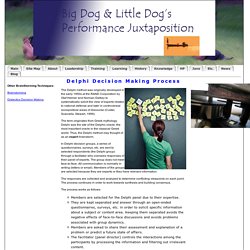
The term originates from Greek mythology. Expert Recommendations for Implementing Change (ERIC): Protocol for a Mixed Methods Study. BACKGROUND: Identifying feasible and effective implementation strategies that are contextually appropriate is a challenge for researchers and implementers, exacerbated by the lack of conceptual clarity surrounding terms and definitions for implementation strategies, as well as a literature that provides imperfect guidance regarding how one might select strategies for a given healthcare quality improvement effort.
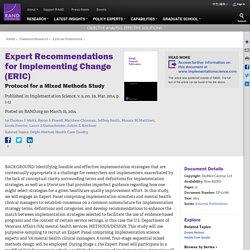
In this study, we will engage an Expert Panel comprising implementation scientists and mental health clinical managers to: establish consensus on a common nomenclature for implementation strategy terms, definitions and categories; and develop recommendations to enhance the match between implementation strategies selected to facilitate the use of evidence-based programs and the context of certain service settings, in this case the U.S.
Department of Veterans Affairs (VA) mental health services. This report is part of the RAND Corporation external publication series. Rainbow Framework. This file is a PDF (307 KB) BetterEvaluation organises options into 32 different evaluation tasks, grouped by 7 colour coded clusters to make it easier for you to choose and use appropriate methods, strategies or processes. Each of the inpidual clusters of the tool is laid out in a table checklist that identifies the task and the relevant evaluation planning questions and options (methods or strategies) that can be applied in each case. Contents. Expert recommendations for implementing change (ERIC): protocol for a mixed methods study. Overview The ERIC process involves a four-stage sequential mixed methods design (qualitative → QUANTITATIVE) [57].
Stages 1 and 2 are used to establish expert consensus on a common nomenclature for implementation science (Aim 1). Stages 3 and 4 build upon the earlier stages and are used to develop expert recommendations regarding how to best match discrete implementation strategies to high priority implementation scenarios in mental health (Aim 2). Table 1 provides an overview of the study’s aims and stages. Decide which evaluation method to use. Aim to use a combination of options For any evaluation, you’ll need a combination of options (evaluation methods) for different aspects of the evaluation. These options are useful for completing evaluation tasks related to collecting data, analysing data, reporting data, and making decisions about the evaluation. You can get an overview of the different tasks involved in evaluation, and the options for each of these by downloading the Rainbow Framework.
Back to top Analyse the types of Key Evaluation Questions you want to answer. The Delphi Method - Problem Solving Techniques from MindTools.com. Achieving Well Thought-Through Consensus Among Experts © iStockphotoSadeugra Brainstorm high level approaches individually. It's a common observation to say that when you get three experts together, you'll often end up with four different opinions. Purposeful program theory: effective use of theories of change and logic models. Purposeful Program Theory: Effective Use of Theories of Change and Logic Models (Research Methods for the Social Sciences) eBook: Sue C. Funnell, Patricia J. Rogers: Kindle Store. How to make more successful enterprise software purchases. To some degree, purchasing enterprise software is a journey into the unknown. When projects start, organizations have only a very general idea of what they want and the problems the new software should solve.
As the project continues through evaluation, selection and implementation, organizations learn more about their needs. Wayferry - Enterprise Software Evaluation and Selection. How to avoid common enterprise software selection risks. Organizations always seek a return on enterprise software investments. All too often, that planned ROI doesn’t materialize because the best-fit software is not selected. This article examines the more common software selection risks, along with suggestions to alleviate those risks. 1) Unknown requirements Unknown requirements are those that the software buyer doesn’t know they need.
They usually surface as problems during software implementation, where workarounds can cause delays and cost overruns. The solution is a requirements analysis of sufficient breadth and depth.